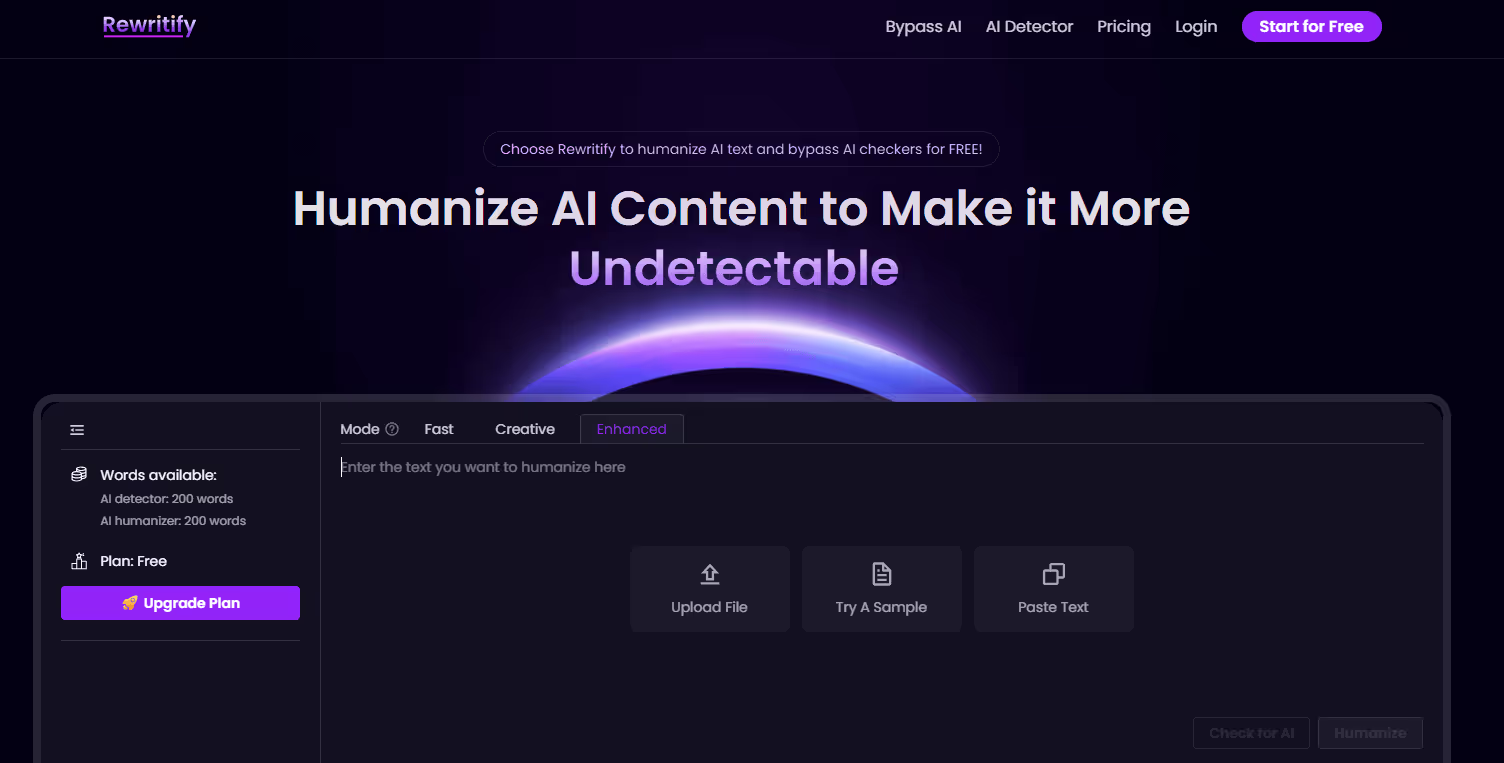
“Choose Rewritify to humanize AI text and bypass AI checkers for FREE!”
That’s the bold claim on the front page of Rewritify, a tool marketed as a quick fix for anyone worried about AI detection.
Rewritify aims to transform AI-generated content into more human-like text that can appear undetectable to detection software.
But does it actually work? With AI-generated content becoming more common and detection tools improving in parallel, the promise of “humanizing” text has never been more popular.
In this review, we’ll take a closer look at what Rewritify AI is, how it works, why people are turning to tools like it, and, importantly, whether its rewritten content can truly bypass leading AI detectors.
Similar to other rewriting platforms, Rewritify aims to transform AI-generated content into more natural, human-like writing that can slip past detection tools.
According to Tracxn, Rewritify was founded in 2024 and operates as a small, unfunded SaaS company.
With no outside investment or enterprise-level backing, its approach is focused on offering a lightweight, low-cost solution, starting with a free tool that covers up to 200 words before requiring a subscription.
While other AI humanizers attempt to do this by altering a few words within a piece of text, Rewritify claims to do a “comprehensive overhaul of the text by imitating real human writing patterns.”
As with other AI tools, there is quite a lot of interest in Rewritify AI, particularly from writers who are interested in making AI text sound less artificial.
Although there may be interest in the tool, does it actually work? Let’s find out!
We decided to put the Rewritify tool to the test to establish whether the content produced can bypass AI detection.
Step 1: To begin our test, we need to generate text in ChatGPT. We used the 4o model to generate AI content.
Step 2: Next, we’ll copy the AI-generated text and paste it into three of the most popular AI content detectors: Originality.ai, GPTZero, and Writer.
Step 3: Then, we’ll also copy that text and paste it into Rewritify, getting our ‘humanized’ content.
Step 4: Finally, we will copy our new rewritten text and run it through leading AI detectors, which will allow us to compare the versions and see if the tool can really deliver on its promise of undetectable AI.
Sample prompt:
“Create an engaging email for a furniture company to announce the release of a new research paper on how much time people spend sitting on their couch. Highlight key findings from the study to spark readers' curiosity, such as average hours spent per day, the impact on well-being, and trends in couch usage. Position the company as a trusted expert in creating comfortable, ergonomic seating. Include a link to download the full research paper and a subtle call-to-action for exploring the company's range of couches designed for long-lasting comfort and support.”
Original content (ChatGPT-4o generated): 100% Confidence the text is Likely AI
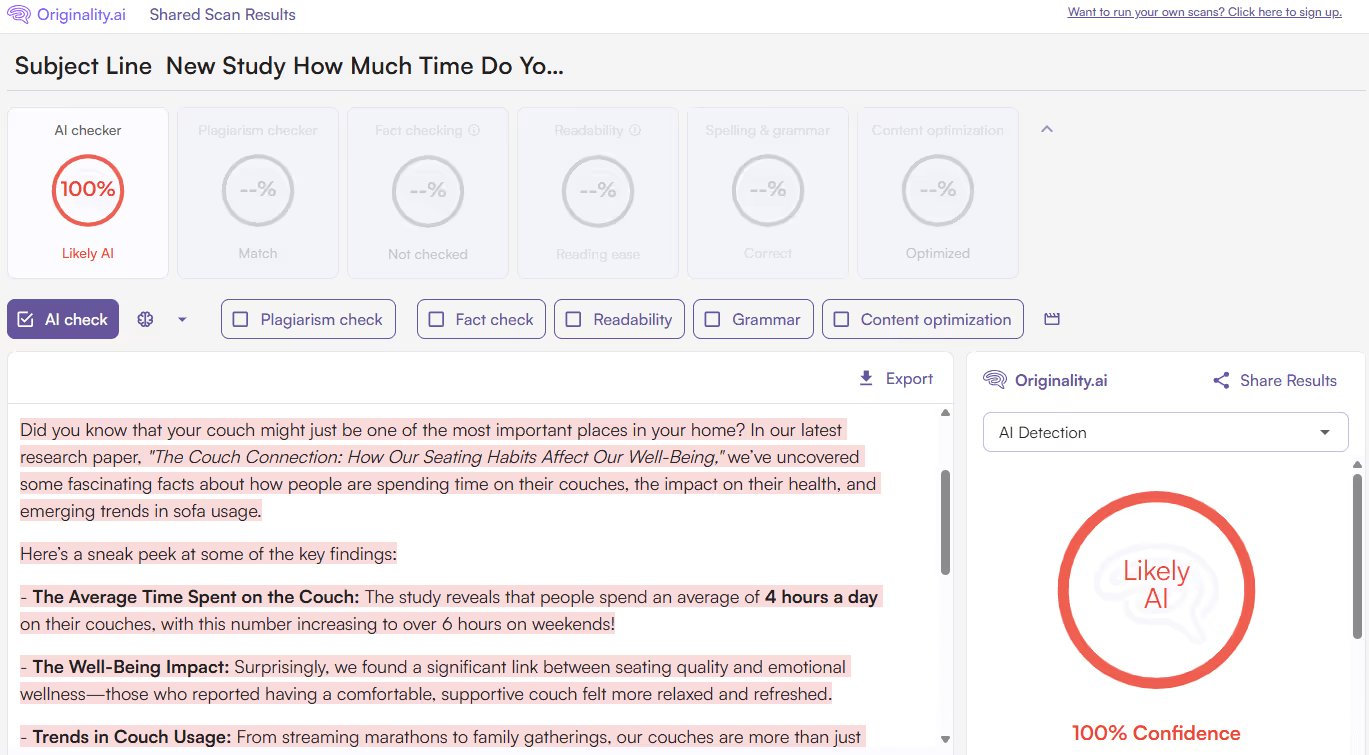
Learn more about AI detection and its efficacy in our AI detector accuracy review.
Rewritify AI Humanizer version: 100% Confidence the text is Likely AI
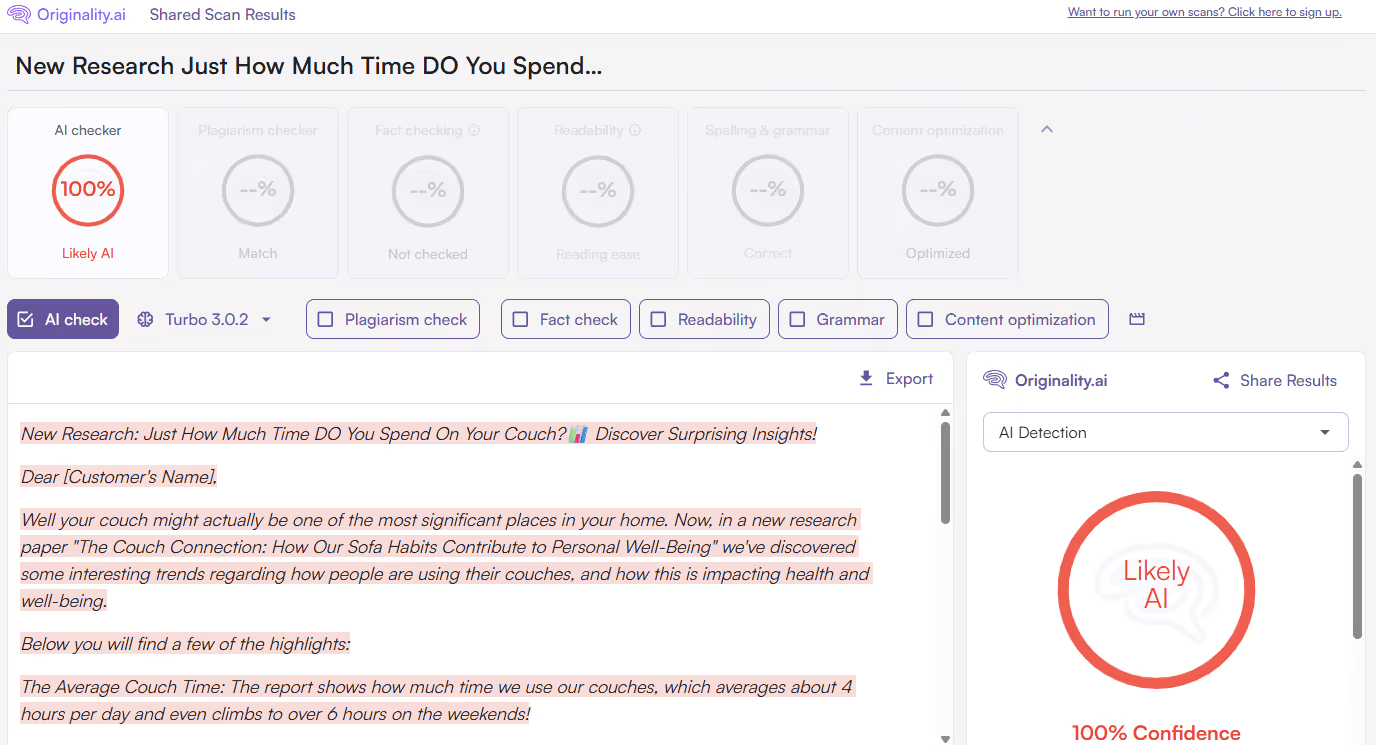
Try the Originality.ai AI Checker today!
Original content (ChatGPT-4o generated): 100% Probability the text is AI
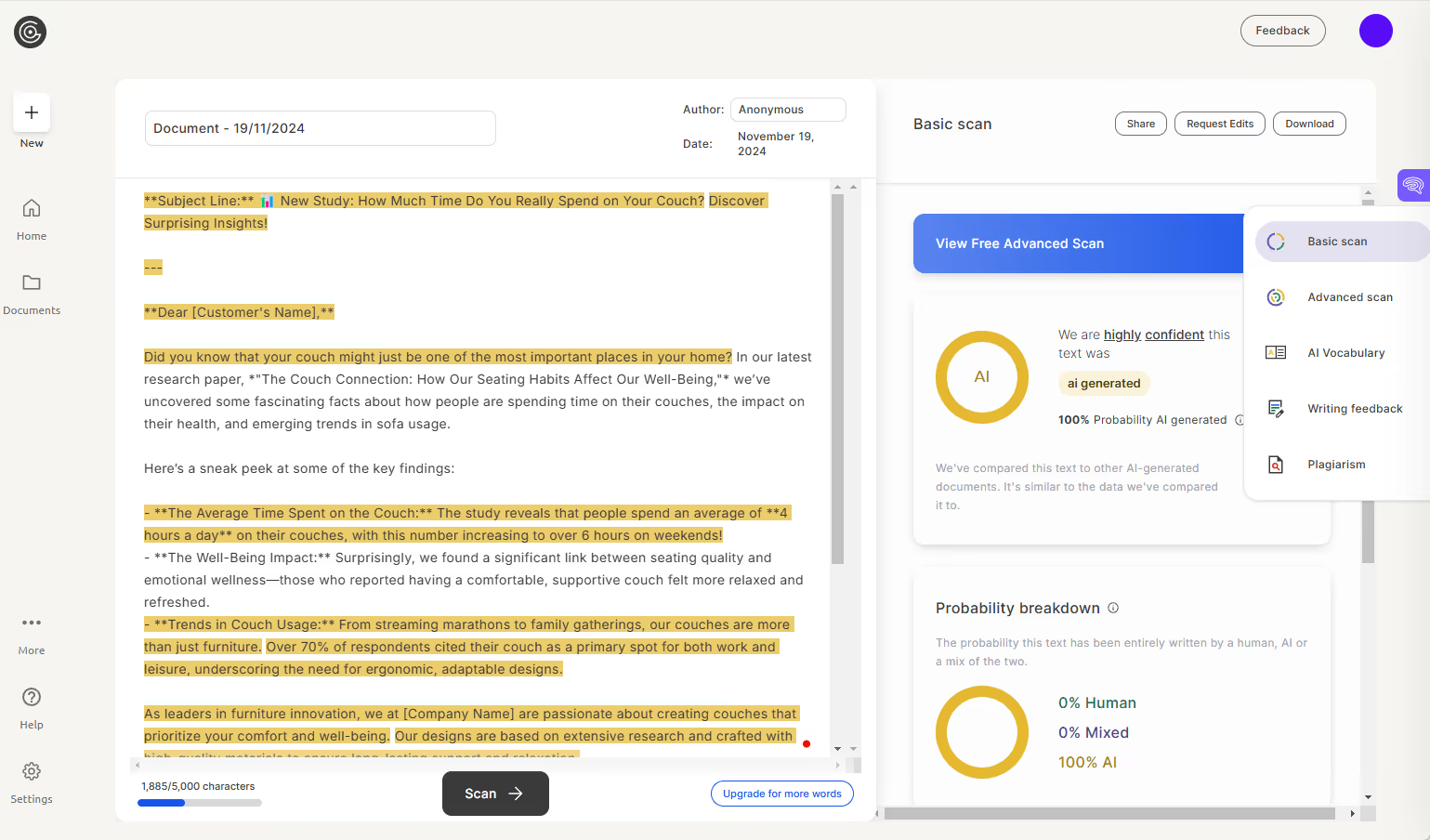
Rewritify AI Humanizer version: 5% Probability the text is AI
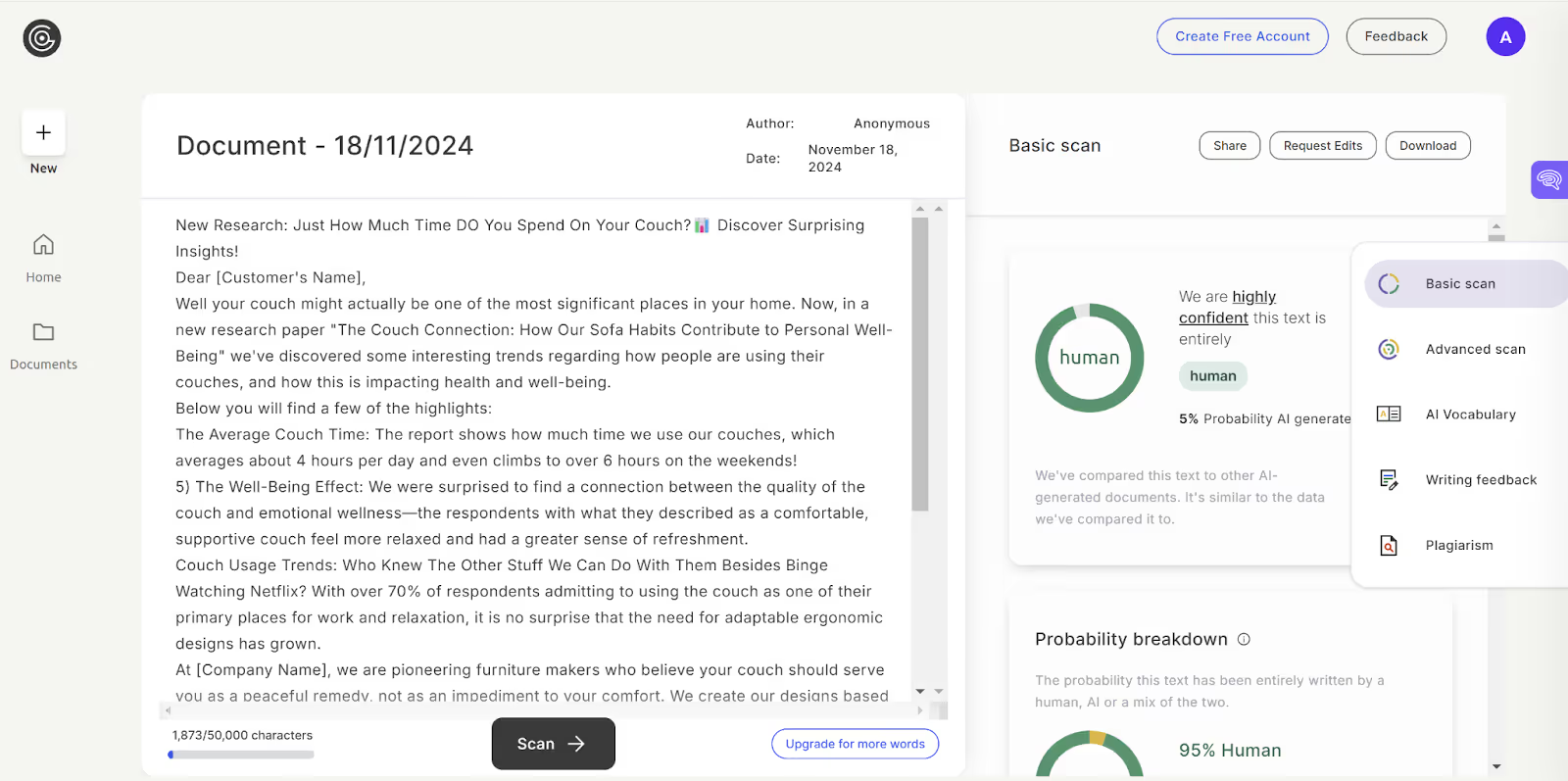
Original content (ChatGPT-4o generated): 14% AI & 86% Human-written

Rewritify AI Humanizer version: 2% AI & 98% Human-written

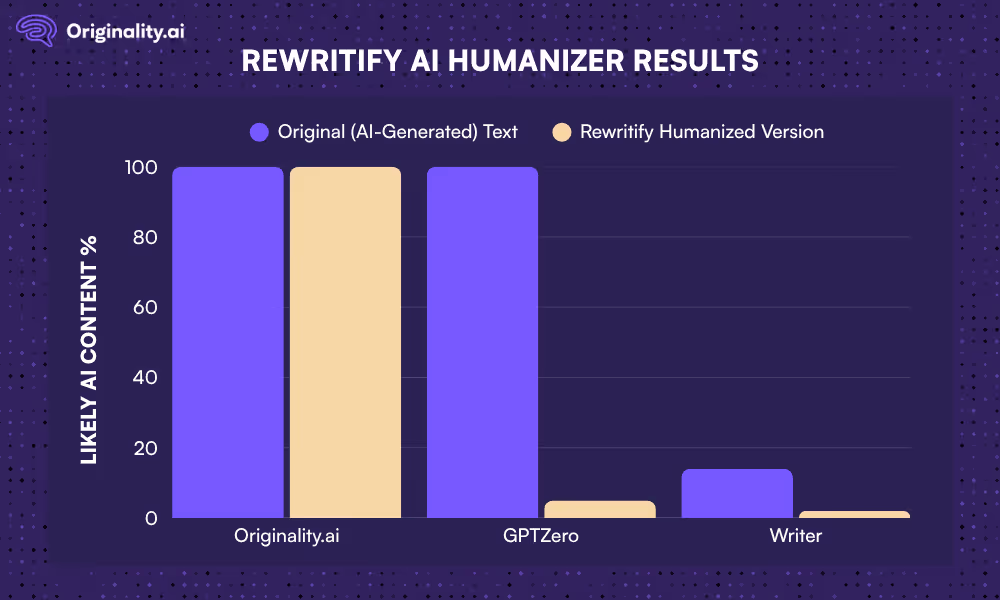
Looking closer at the rewritten sample, it becomes clear that the output still doesn’t resemble authentic, human-authored writing. Further, the Originality.ai AI Detector identified the “rewritten” content as AI with a high degree of confidence.
The key takeaway? Rewritify functions more like a digital thesaurus, swapping words and rephrasing sentences without producing copy that genuinely feels human-written. Its approach focuses on altering the style and tone of the writing, but it often fails to replicate real human patterns convincingly.
In short:
Recommendation: If you’re serious about producing content that ranks, builds trust, and avoids penalties, you’re better off creating original material or using AI responsibly, with transparency. Tools like Rewritify may offer a quick fix, but they don’t deliver the quality or reliability needed for long-term success.
Check out our top guides to learn more about AI detection:
You can use up to 200 words in Rewritify on a free plan, but to humanize more than 200 words, you must pay for a monthly subscription.
From our study, we found that Rewritify AI humanized text was still detectable as AI.
Generative AI can be an incredibly effective tool for research and productivity, but only when used correctly. The use of generative AI depends entirely on the situation and should always be used with complete openness and transparency. Read more about the ethics of AI-generated content.
Many rewriting platforms claim they can make AI text pass detection, but in practice, most only shuffle words or rephrase sentences. Advanced AI detectors like Originality.ai still flag the content as AI-generated, meaning it is still detectable as AI.
Rewritten text can sometimes sound more natural on the surface, but it rarely captures the nuance, flow, and intent of authentic human writing. The tone and rhythm often feel mechanical, especially in longer pieces.
Over-reliance on rewriting tools often lowers overall quality. Words get swapped without regard for context, which may lead to awkward phrasing, factual inconsistencies, or a loss of clarity. High-quality writing requires more than a simple word change.
As AI continues evolving, transparency remains key. From an ethical standpoint, it’s best to disclose when you use AI to generate or edit content. Passing off machine-written text as purely human without disclosure can mislead readers and erode trust.

Machine Learning (ML) is an aspect of Artificial Intelligence (AI) that uses algorithms and data to enable machines and computers to learn automatically. It basically helps machines and computers to predict outcomes accurately. Machine learning originated in the early 1950s with the evolvement of simple algorithms from pre-1950s statistical methods. Then this evolved into reinforcement